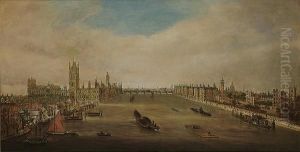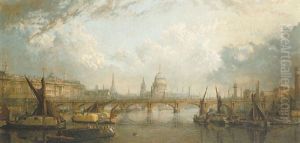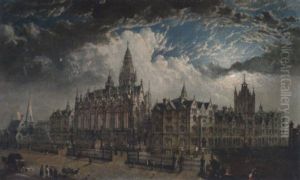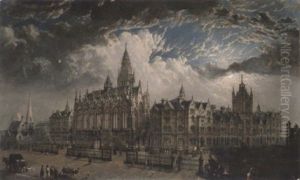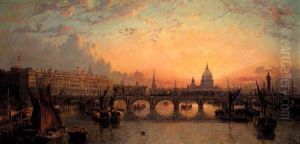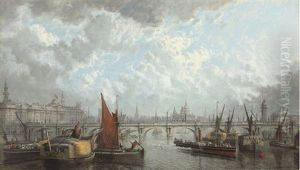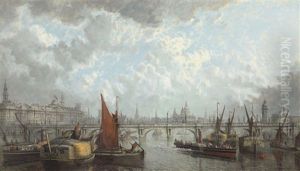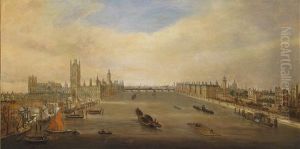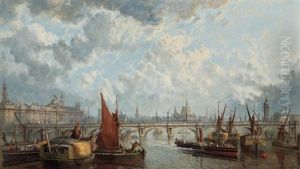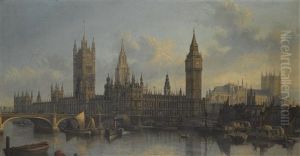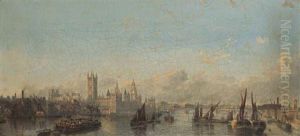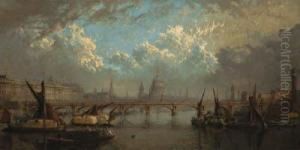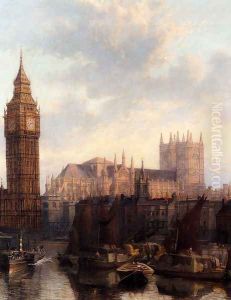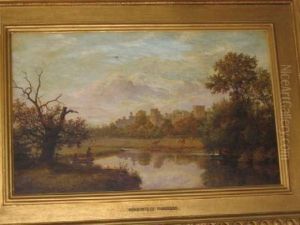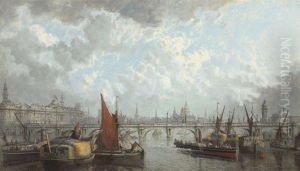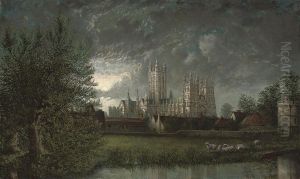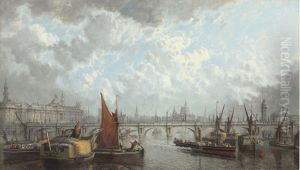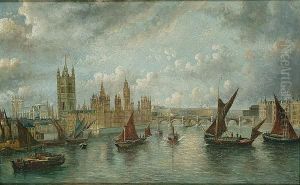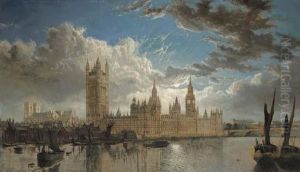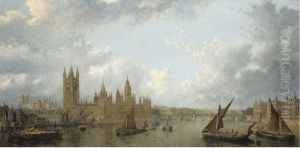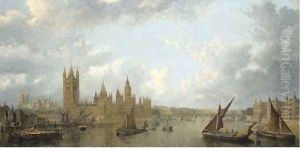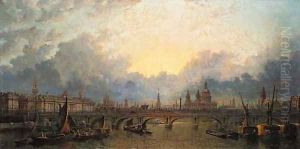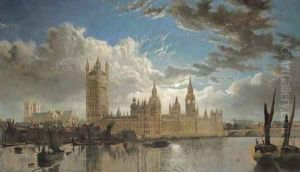John Macvicar Anderson Paintings
John Macvicar Anderson was a prominent Scottish architect born in 1835, who made significant contributions to the architectural landscape of Britain during the Victorian and Edwardian eras. His career spanned several decades, during which he developed a versatile portfolio that included commercial buildings, private residences, and ecclesiastical structures. Anderson was educated at the Royal High School, Edinburgh, and initially trained under his father, who was also an architect. This early exposure to architecture instilled in him a deep understanding of traditional designs, which he skillfully blended with the emerging trends of his time.
Anderson's work is characterized by its diversity and the quality of craftsmanship. He was adept at working with various architectural styles, but he is perhaps best known for his contributions to the Gothic Revival movement, a style that sought to revive medieval Gothic architectural forms. One of his most notable projects in this style is the National Wallace Monument near Stirling, Scotland, a towering tribute to Sir William Wallace, a Scottish hero. This project, completed in 1869, showcased Anderson's skill in creating monumental and evocative structures that resonate with historical significance and national pride.
Beyond his architectural practice, Anderson was deeply involved in the professional community. He served as the President of the Royal Institute of British Architects (RIBA) from 1891 to 1893, a testament to his esteemed position within the architectural field. His leadership in RIBA helped shape the organization's direction and contributed to the advancement of architectural standards and education in Britain.
Despite his success, Anderson was not just focused on grand and public edifices; he also had a keen interest in the design of private homes and interiors, displaying a versatile approach to architecture that catered to both public and private spheres. His residential designs often incorporated innovative layouts and details, reflecting the needs and tastes of his clients while still adhering to aesthetic principles.
John Macvicar Anderson's legacy is seen not only in the buildings he designed but also in his influence on the architectural profession and his contributions to the development of architectural practice in Britain. His work continues to be studied and admired for its craftsmanship, aesthetic quality, and historical significance. Anderson passed away in 1915, leaving behind a rich legacy that has cemented his place as a significant figure in British architecture.
